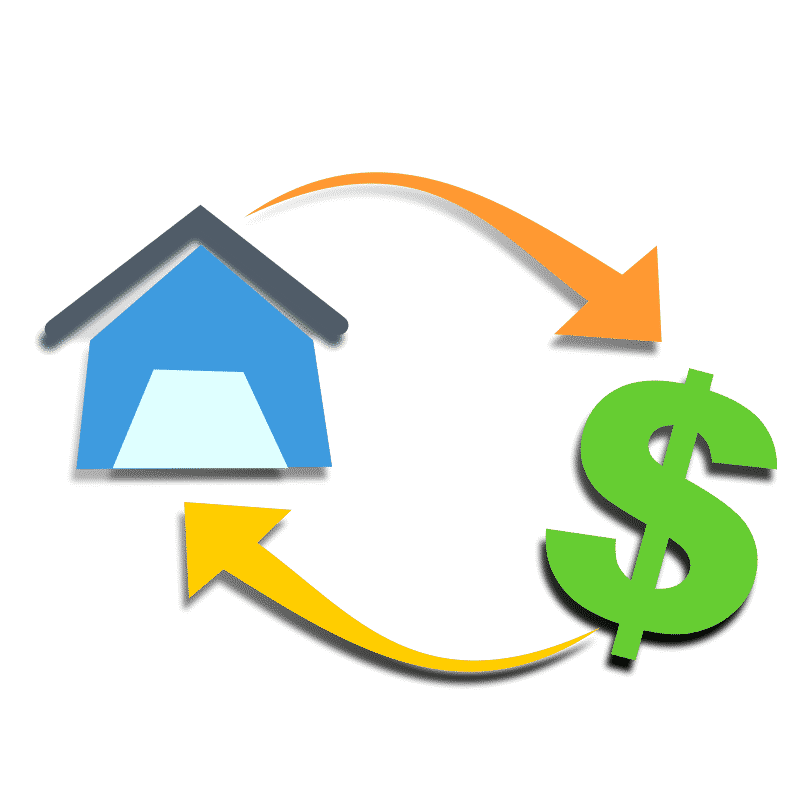“Flipping Property” simply means buying a property and reselling it quickly, as opposed to holding on to a property long term as a rental. Flipping properties comes in several varieties, most of which are legal and profitable, some of which are not.
Flipping Property Strategy #1: Buy, Fix and Flip
Let’s start with the most common form – the good, old “fix ‘n flip”. This process involves buying a property that needs work, fixing it up, then selling on the “retail” market, that is, to a person who will live in the property. This method is tried and true and works very well. You can easily make $15 – $50k on one deal, depending on your market and how good you are at finding bargains.
The danger with fix and flips is either paying too much or underestimating repairs. Be very conservative in your fix-up costs and length of time it may take to resell. Also, make sure you include in your analysis the cost of paying a real estate agent to sell the property.
Flipping Property Strategy #2: Buy, Refi & Lease/Option
Rather than sell the fixed up property for all cash, sell for terms. Once you have completed the rehab, refinance the property at its new appraised value. If you did the math correctly, you should have little or no money in the deal. Sell the property on a lease with option to buy. The rent payment from your tenant/buyer should cover your mortgage payment (if not, consider an interest-only or adjustable rate loan that is fixed for 3 years). When your tenant exercises his option to purchase, you reap a larger profit, since you don’t have to pay a broker’s fee. If the tenant exercises his option after 12 months, you benefit from a lower capital gains tax rate.
Flipping Property Strategy #3: Buy & Flip “As Is”
Don’t like to do fix-up work? Consider selling the property “as is” as a light fixer upper. If the local real estate market is hot, you should be able to sell the property in poor condition just a little below market. This is especially the case with houses in “transitioning” neighborhoods. Make sure, of course, that you acquire the property sufficiently cheap enough that you can sell it below market quickly and still profit.
Flipping Property Strategy #4: Wholesale
Don’t buy, just wholesale to another investor. Put a junker property under contract and assign your contract wholesale to someone else who will pay you a few grand for the flip.
Flipping Property Strategy #5: Pre-Construction
In very hot real estate markets, prices are appreciating as much as 2% per month. If you time things right, you can put a contract on a pre-construction house or condominium, then flip it to someone else when the development is complete. If it takes 12 months for the development to be complete, and the condo price is $500,000, you could make $100,000 or more in one year! Of course, the opposite is also true – you could end up losing money if the local economy tanks and you end up with a worthless condo that you can’t sell for more than you paid. Use this approach very carefully…
Flipping Property Strategy #6: Scouting
The Scout is an information gatherer, so not technically a property flipper. He is the “bird dog” who finds potential deals and sells the information to other investors. Many people get started as a Scout for other investors because it does not take any cash or prior knowledge to look for distressed properties. The Scout finds a property for sale, gathers the necessary information, and then provides this information to investors for a fee. The fee will vary depending on the price of the property and the profit potential. The Scout can expect to make five hundred to one thousand dollars each time he provides information that leads to a purchase by another investor.
Flipping Property Strategy #7: Illegal Flipping
OK, I am not advocating this approach, because it is illegal. Illegal property-flipping schemes work as follows: unscrupulous investors buy cheap, run-down properties in mostly low-income neighborhoods. They do shoddy renovations to the properties and sell them to unsophisticated buyers at inflated prices. In most cases, the investor, appraiser and mortgage broker conspire by submitting fraudulent loan documents and a bogus appraisal. The end result is a buyer that paid too much for a house and cannot afford the loan. Since many of these loans are federally insured, the government authorities have investigated this practice and arrested many of the parties involved. As a result, the public perceives is flipping to be illegal.
The fact is, “flipping property” – as I described in the beginning of this article – is NOT illegal. Loan fraud in the process of flipping is what is illegal, so don’t confuse the two. The other six ways of flipping property are very legal, very ethical and very profitable!

